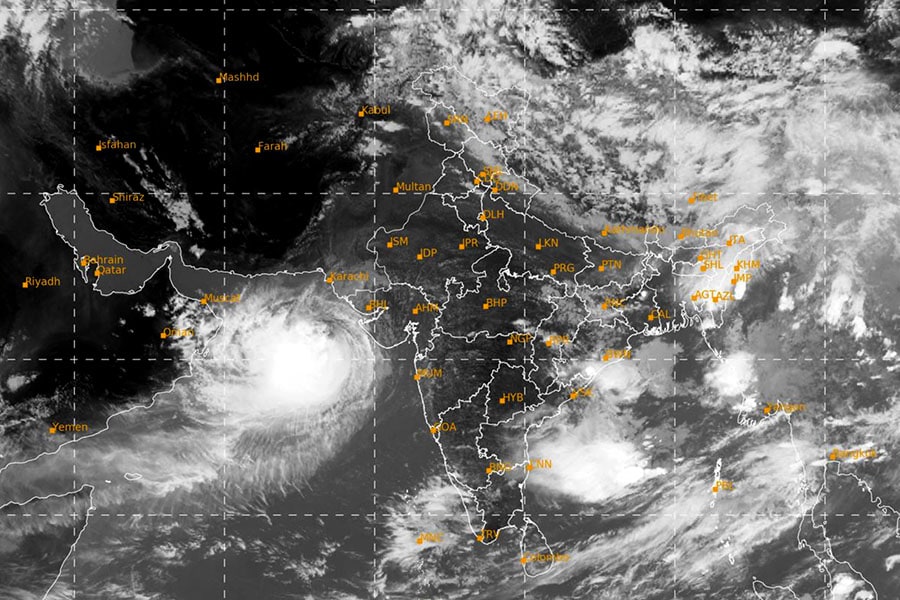
Explained: All you need to know about Cyclone Biparjoy
As the storm prepares to make landfall on the western coast tomorrow, here's a primer on why there has been an uptick in cyclonic activity in the region of late
 Image: India Meteorological Department
Image: India Meteorological Department
Cyclone Biparjoy is the second major cyclone in the north Indian Ocean region after Mocha, which struck the coastlines of Bangladesh and Myanmar on May 15. Not a very good sign, the experts say. ‘Very severe cyclone' Biparjoy is aiming at the coastline of Gujarat and Pakistan’s southern Sindh region from the Arabian Sea. It is expected to cross between Gujarat’s Mandvi and Pakistan’s Karachi near Jakhau Port in Gujarat on the evening of June 15. According to the India Meteorological Department (IMD), the cyclone will arrive with a maximum wind speed of 125–135 kmph, gusting to 150 kmph.
Why are we facing a storm around this time?
Cyclone Biparjoy has been an extraordinary storm. In June, we usually don't see storms in the Arabian Sea. They are mostly seen in the pre-monsoon season. But since the monsoon got delayed this time because the temperatures were still high over the Arabian Sea, that’s why it came up.
How did Biparjoy gather steam?
It started its journey almost a week ago, on June 6, and rapidly intensified into a severe cyclone within 24 hours. Thereafter, it gained strength and became extremely severe in just two days, but lost some of its intensity because of the drop in sea surface temperatures. At the moment, it's a very severe cyclonic storm about a little less than 300 km from the coast of Saurashtra and Kutch, explains AVM GP Sharma, president at Skymet Weather.
"This is an exceptional storm that will possibly strike with fury. Though it may drop its card to a serious storm at the time of landfall because of fiction, dry air entrainment, and a drop in temperatures," explains Sharma.
What precautionary measures are being taken?
As the cyclone is set to hit Gujarat’s coast within 24 hours, many parts of the Saurashtra-Kutch region have received heavy rains accompanied by strong winds. Around 40,000 people residing near the coastal areas have been evacuated and shifted to shelter homes. Over 90 trains have been cancelled, according to the Western Railway. Around 30 teams of the national and state disaster response forces have been deployed.





